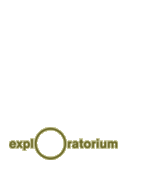|

|

|
|||||||||||||
|

|
Try this:
on your next visit to a flower
shop or the produce section of a grocery store, remind yourself
that what you see there are actually plants. Those green beans?
The seed pods of a plant. Those long-stemmed roses? Recently clipped
from a living, growing bush. Then ask yourself whether you’ve
ever seen plants exactly like these growing in nature. With very
few exceptions, the answer will be “no.”
|
|

How do growers create these transformations? There are a variety of ways to finagle nature, but most of them fit into these three categories:
Grafting
Hybrids
Transgenics
|
|
|

|
You may well have seen wild roses, with their small flowers brightening shrubs, or the seed pods of trees scattered on the ground. All of the plants we eat and decorate our surroundings with have precursors in nature. Over millennia, though, these plants have been bred to exhibit traits that we desire—long stems, hardiness, large fruits. The genes of a modern rose or green bean reflect the choices of thousands of farmers, gardeners, and plant breeders. For centuries, they’ve capitalized on nature’s own reproductive and regenerative mechanisms, and manipulated the plants to suit human desires. In many cases, the resulting plants wouldn’t be found in nature because they can’t reproduce effectively. Sometimes the traits that benefit our survival are detrimental to their own. In effect, we have created a cycle of mutual dependence: the plants we need to sustain ourselves would fade into history if we did not, in return, sustain them.
|
|
|||
|
|
|
|
|
|
|
|
|
|
|
| © Exploratorium |